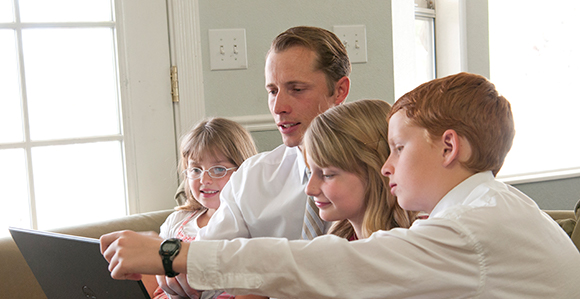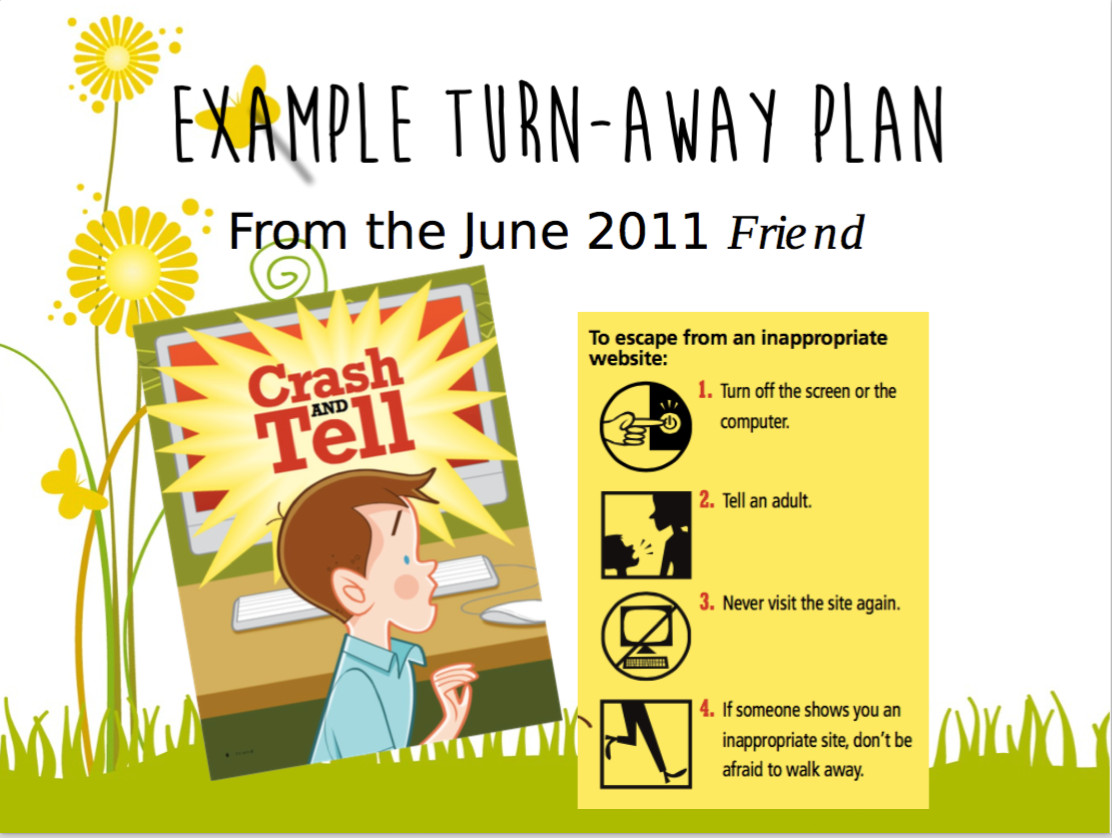Teaching Children How to Use Technology to Uplift Others
Contributed By Valerie Johnson, Church News contributor

Creating a digital media plan for your family helps keep them safe and encourages them to uplift others.
Article Highlights
- Create a digital media plan for your family.
- Eliminate any bad media practices.
- Encourage positive uses of digital media.
“I want to testify that God cares about us cultivating good technology habits just like He cares about every other aspect of our lives. I promise that He can speak through technology just like He can use every other tool.” —Marissa Widdison, assistant editor of the Friend magazine
For digital immigrants, or those who were raised before Facebook came along, figuring out how to help children develop good media practices can seem overwhelming and confusing. They might ask, “How do I navigate this world? How do I keep my kids safe? What are the rules here? What are the best practices here? How am I successful in this digital age?”
Marissa Widdison, assistant editor of the Friend magazine, spoke on teaching children how to use technology to build others during a breakout session of the BYU Women’s Conference on Friday, April 29.
Inspired by the art on the women’s conference booklets, Sister Widdison compared using technology to gardening.
Create a plan
“You would never walk into the middle of a field and say, ‘I want to make a garden here. So what I’m going to do is open up a bunch of seed packets, pour them into my hand, then toss them up into the air and then they’re going to land in rows, and everything’s going to be planted exactly where it needs to go,’” Sister Widdison said. Similarly, every family needs to have a digital media plan.
For instance, consider at what times of the day using technology is OK and when it isn’t. “Perhaps in your family you have a rule that says, at dinnertime, we’re going to pass around a basket and everyone puts their phone in the basket; the basket goes in the other room so at dinner we’re with each other. That’s a no-technology time,” Sister Widdison said. “Or maybe you say, ‘At 7:30 every night, all the phones go in Mom and Dad’s room and that’s where they charge overnight.’”
In her work at the Friend magazine, “we see how kids want to live up to expectations,” Sister Widdison said. “The majority of them really do. But they have to know what the expectations are. They’re not psychic. So do we make that clear for them? What are the consequences? If they flagrantly, intentionally break one of those rules, do they know what the consequence is going to be? Or do they know at least there are going to be consequences?”
Pull the weeds
In this analogy, weeds are anything considered a bad media practice. It could be as severe as viewing pornography, but more likely those bad practices are smaller. “Maybe it’s spending too much time on a digital device. Maybe it’s just consuming media that’s not bad but is just a downer,” Sister Widdison said. Some people become depressed after comparing their life to the lives of their friends as depicted by a Facebook or Instagram feed.
“In a garden, you don’t just weed once,” Sister Widdison said. “Weeding is a constant thing. It’s an ongoing thing. You have to do it over and over again, pretty much every day. Do we look at that same principle when it comes to dealing with the negative media and our children?”
For instance some parents might think that their child is going to be fine after they’ve had “the Porn Talk.” “That’s kind of like saying, ‘I weeded once so everything’s going to be fine,’” Sister Widdison said. In reality, children will encounter those “weeds” repeatedly and need to have conversations about pornography and good media practices regularly on an ongoing basis, she said.
Sister Widdison suggested three websites to help parents find ideas and lessons on pornography and good media practices.
First is overcomingpornography.org, which has family home evening lessons on a variety of subjects for all ages, including “My Body Is from God,” “Sexual Intimacy Is Beautiful and Sacred,” and “What Do I Do If I See Pornography?” “So if you don’t know how to start that conversation, it’s OK,” Sister Widdison said. “We have some words that you can use to get started.”
Second is lessonhelps.ChurchofJesusChrist.org, which has a “compilation of material from the Friendmagazine and other content on ChurchofJesusChrist.org that we’ve tried to put in a format that makes it easy to find stuff on a particular topic.”
The third website is educateempowerkids.org, a nonprofit site founded by a woman who graduated from BYU. “She started this nonprofit because she realized she wanted a place for really good resources on strengthening and empowering children to help them grapple with some of the issues that are in the world today.”
Water the flowers
“When’s the last time you did something beautiful with technology?” Sister Widdison asked. “When’s the last time you did something uplifting with technology? When’s the last time you showed someone charity with technology? When’s the last time you performed an act of service with technology? Sisters, we have so much of an opportunity to show love to other people because of technology. We have a mouthpiece. We can write messages, uplifting things and take uplifting pictures, and put them for the world to see.”
Part of a family’s digital media plan can include doing good things, Sister Widdison said. “Before I scroll through my feed, maybe I send someone an uplifting meme. Maybe I post something that I learned in scripture study, and that’s my routine before I start scrolling. Maybe I text something kind to someone I think is feeling down before I do anything else.”
The Church has provided many uplifting images that can be shared specifically on social media, available for free at medialibrary.ChurchofJesusChrist.org.
Every garden is going to be different
While some gardens may be manicured and others allowed to grow a bit more naturally, one is not a better garden than another. “Every family is going to have a different media garden because every family has different strengths and weaknesses,” Sister Widdison said.
“Do you know what your family members need?” she asked. “Maybe you have one kid who needs different media rules because they struggle with different things.”
In closing, Sister Widdison said, “I want to testify that God cares about us cultivating good technology habits just like He cares about every other aspect of our lives. I promise that He can speak through technology just like He can use every other tool.”

Family home evening lessons for children of all ages on subjects such as “Sexual Intimacy Is Beautiful and Sacred” and “What Do I Do If I See Pornography?” are available on overcomingpornography.org.

The Media Library on ChurchofJesusChrist.org, found at medialibrary.ChurchofJesusChrist.org, has many images and videos available for free that can be shared on social media.

Marissa Widdison showed some pages from the Friend magazine that gave an example of one family's “turn-away plan,” in a slideshow during a breakout session of the BYU Women's Conference.
